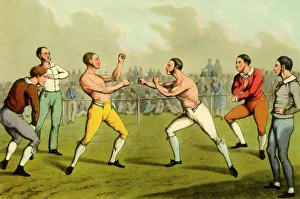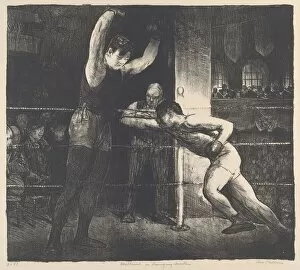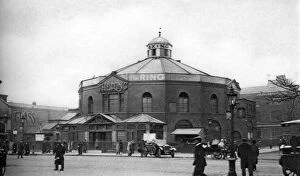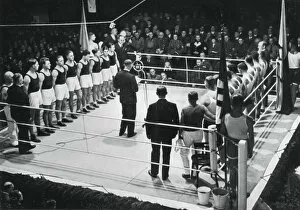Boxing Arena Collection
Step into the time machine and travel back to the early 19th century, where boxing arenas were filled with excitement and anticipation
All Professionally Made to Order for Quick Shipping
Step into the time machine and travel back to the early 19th century, where boxing arenas were filled with excitement and anticipation. In 1941, Henry Thomas Alken captured the essence of this thrilling sport in his masterpiece. Fast forward to 1916, as George Wesley Bellows takes us ringside for a series of captivating bouts. The preliminaries set the stage for an evening filled with raw athleticism and fierce determination. Bellows' brushstrokes perfectly depict the intensity radiating from each fighter's eyes. In 1921, Bellows once again mesmerizes us with "Counted Out, " showcasing the second stone that seals a boxer's fate. The crowd erupts in cheers or gasps in disbelief as victory or defeat hangs on a delicate balance. "Introducing the Champion" transports us back to 1916 when champions ruled the ring. Their presence commands respect as they enter amidst thunderous applause, ready to defend their title against worthy adversaries. Bellows captures every heart-stopping moment in "A Knockout" from 1921. The impact is felt through his vivid strokes as one fighter falls helplessly while another revels in triumph. It's a testament to both skill and strategy within those four ropes. The year is now 1921, and we witness electrifying introductions before each match unfolds under glaring spotlights. Bellows' masterpiece "Introductions" immortalizes these intense moments where fighters psych themselves up for battle while spectators hold their breaths. George Wesley Bellows also takes us behind-the-scenes in "Willard in Training Quarters. " We catch a glimpse of boxers honing their craft, pushing their bodies beyond limits to achieve peak performance before stepping foot into that sacred square canvas. "The White Hope, " painted by Bellows in 1921, tells a story of hope against all odds—a symbol of resilience that transcends boundaries within this brutal yet beautiful sport.
















